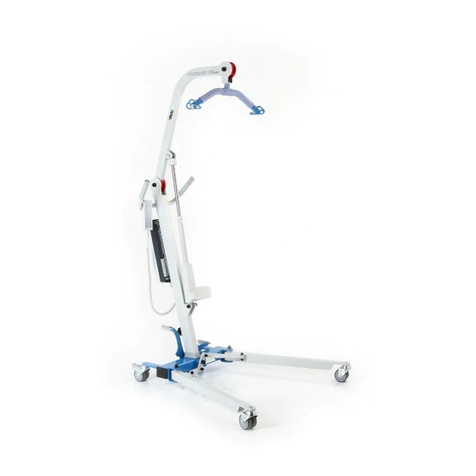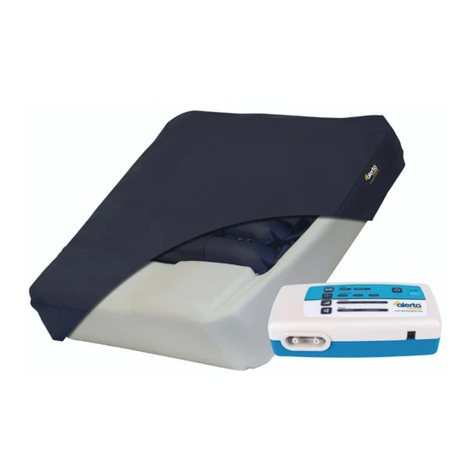
Making cutting-edge medical equipment affordable PAGE 09
4. Operating
Instructions
4.1 Recommendations
To spread the legs, step on the left pedal. To
narrow the legs, step on the right pedal. While
transferring users and to negotiate doors and
confined corridors, the legs should preferably
be narrowed.
When lifting or lowering a user, it is
recommended to press and hold the relevant
button. Repeatedly pressing and releasing the
buttons will cause the actuator motor to start
and stop each time, using more battery and
shortening its operating lifetime.
The electrical system includes a emergency
stop red button. When the red button is in
the out position, the battery will operate
normally. When the red button is depressed,
the power from the battery is cut off. To
reset the button to the out position, turn it
clockwise and release.
The knee’s support is adjustable: allowing five
different heights (50, 54, 58, 62 and 66 cm
from floor.
This support is adjustable to guarantee the
best support for knees adapting to each
user. It has a strap with safety lock in case
it is necessary to adjust the legs of the user.
The boom of the crane is telescopic (see
page 4) to adapt to different measurements
(5 positions every 30 mm). To SHORTEN
the boom, release the safety button (M) and
the button (L) and slide the mobile boom
towards the mast. To EXTEND the arm,
release the button (L) and slide the mobile
boom outwards and position it as much as
you want. The security button (M) will remain
fixed in the last position.
4.2. Recharging battery
If you only have one removable battery and
one charging base, place the hoist near an
electric socket, connect the power supply
cable to the charging base and plug into the
mains (220V).
While the battery is charging the actuator
fails, the emergency stop should not be
pressed and green LEDs “on” lights. The
battery indicator lines flash. When fully
charged the 4 battery indicator lines will
remain fixed. The green “on” light will remain
on until you disconnect from the network.
If you have an extra charging base, you can
remove the battery from the charging base
mounted on the hoist and charge it using the
extra charging base, suitably located near a
mains electricity socket.
Lifting and lowering the user is achieved
by the electric actuator’s action on the
hoist boom. These movements are easy
to control using the two buttons (up and
down) provided on the hand control. When
the boom reaches the upper or lower limit
of its run, it stops automatically.
If the hoist is used daily, it is recommended
to recharge the battery during the night.
The charger will not allow the battery to
overcharge.
When not using the hoist, it is
recommended to recharge the battery at
least once every three months to ensure it
is always in good working condition.
Do not disconnect the black charger
jack plug by pulling the cable. When not
recharging the battery, it is recommended
to keep the mains cable plugged into
the charging base to prevent any liquids
accidentally entering the socket.






























